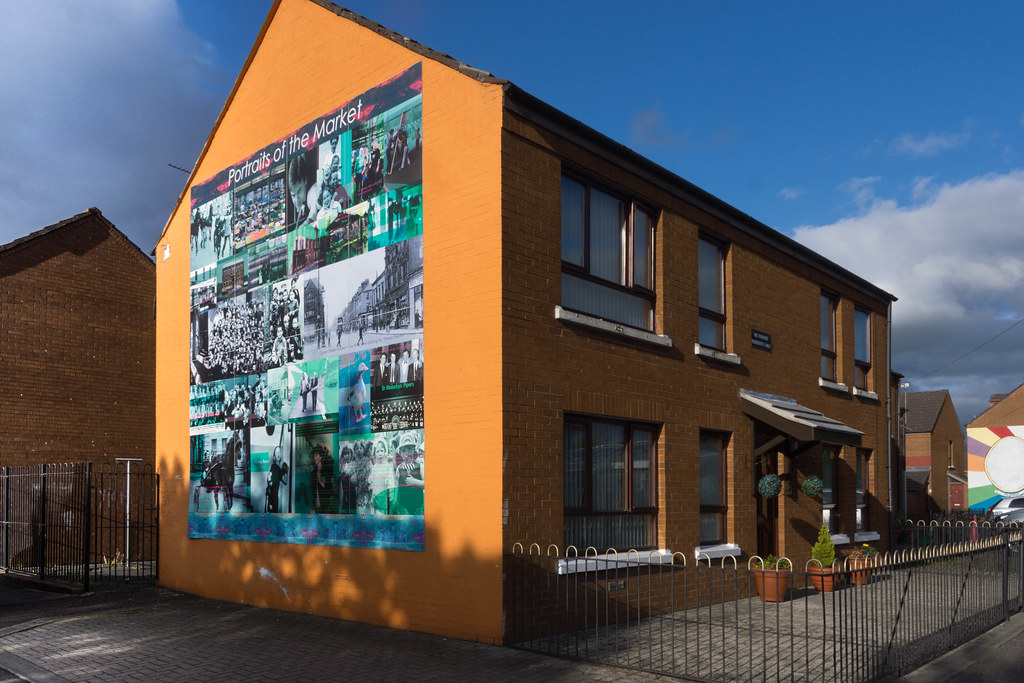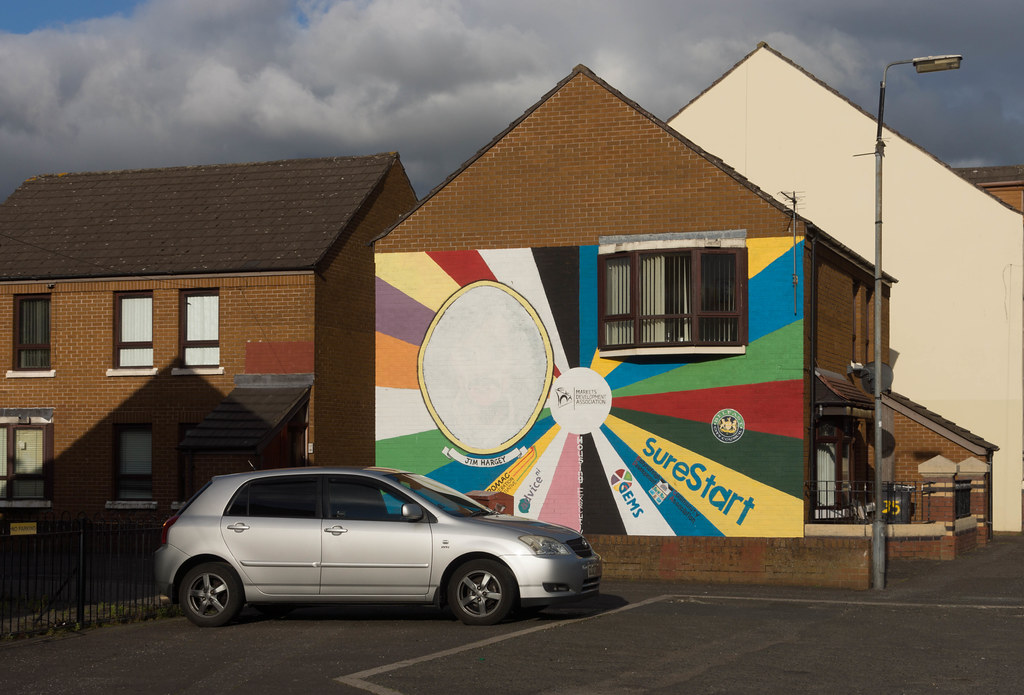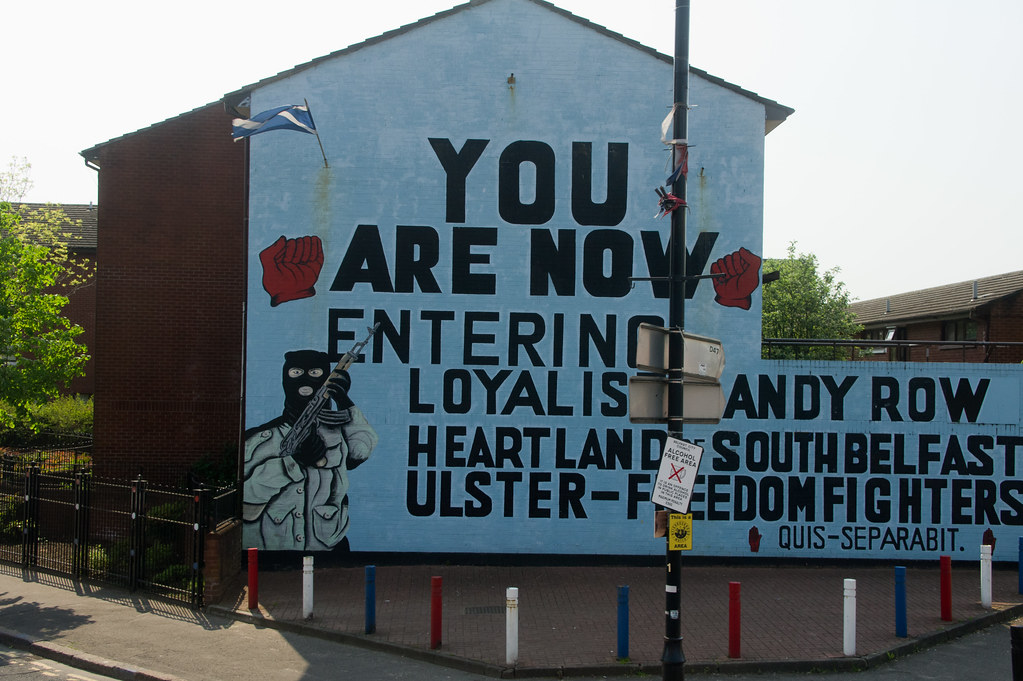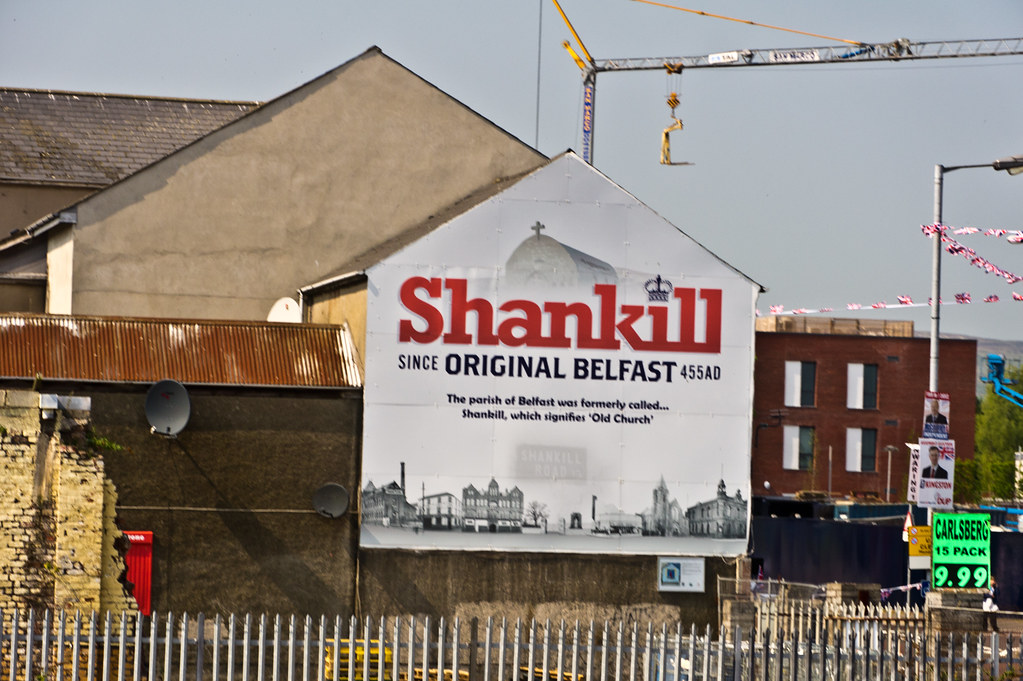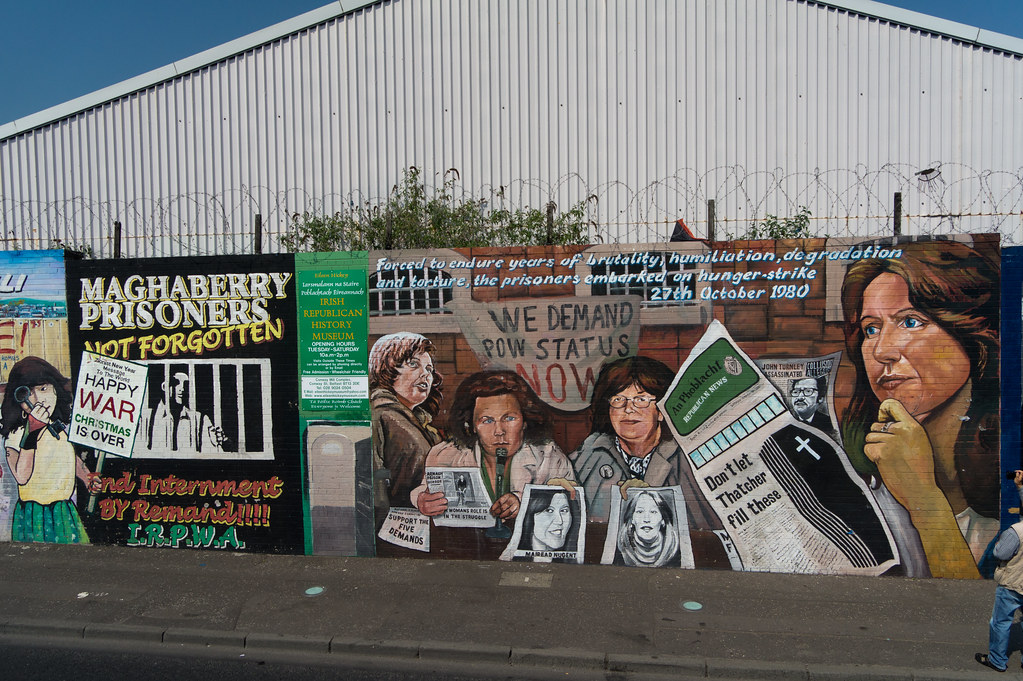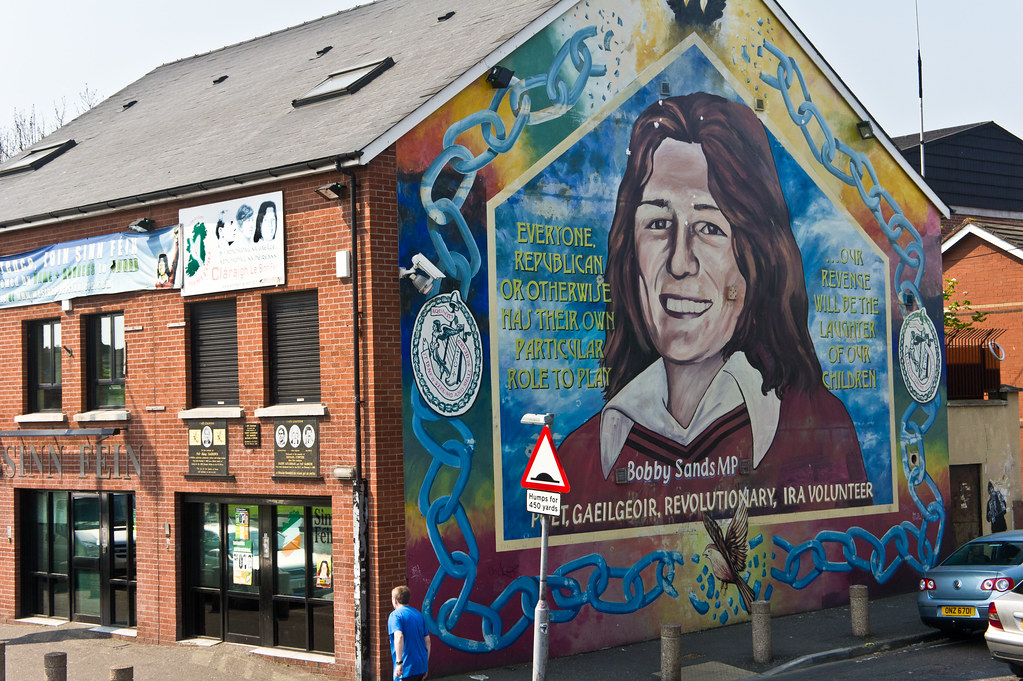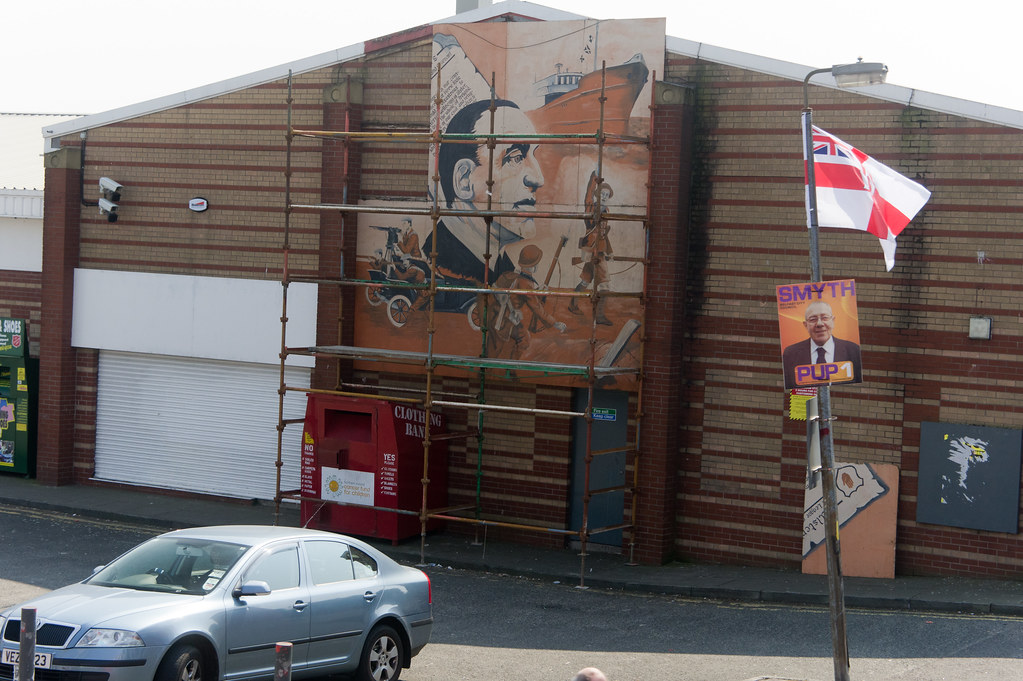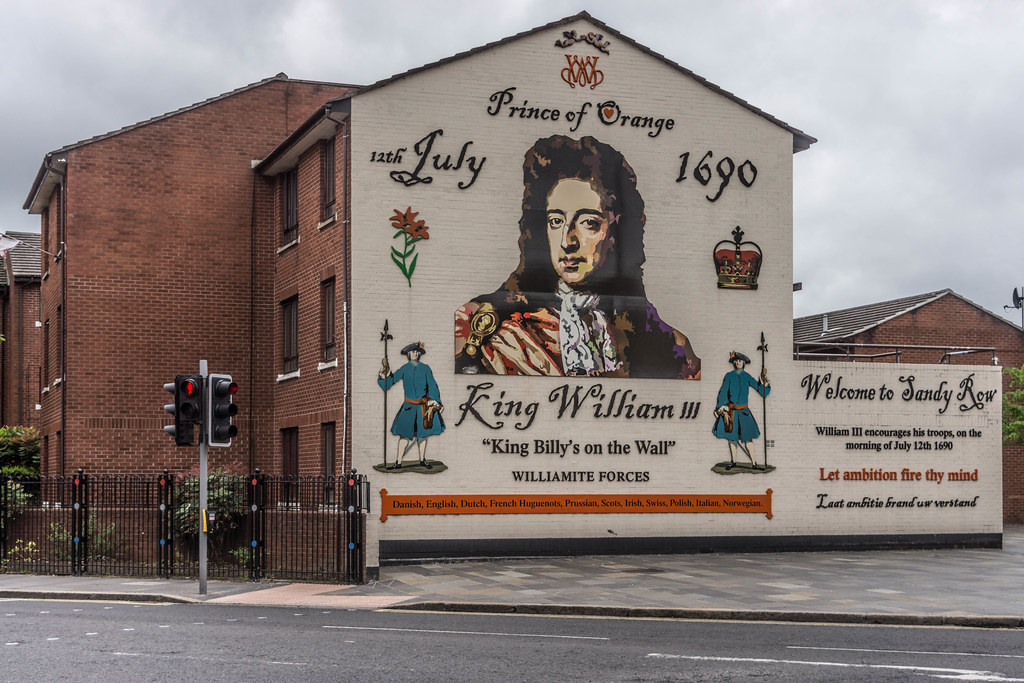
Custom Search
THE GREEN MENU OPTIONS ARE MOBILE FRIENDLY AND ARE FASTER SO THEY ARE RECOMMENDED. THE RED MENU OPTIONS ARE SOMEWHAT SLOWER DEPENDING ON YOUR DEVICE OR BROWSER AND ARE MORE SUITABLE FOR DESKTOPS AND LAPTOPS. THE BLUE OPTIONS ARE PAGE LINKS AND WILL BE PHASED OUT GOING FORWARD
This is an old site and because of this there has been a number technical issues and as a result the site was very slow and not at all suitable for mobile devices. Also for security reasons and problems withe hosting services some links no longer work. Currently the site is being reconstructed and it could be described as a Work In Progress as we try to remove all the issues and broken links.
BELFAST MURALS
MURALS
Murals can be described as a mirror of political change, as they have been painted throughout the last century and display all important historic as well as political developments in the scope of unique wall paintings. In 1908 Ulster loyalists started to portray William III of England on a white horse in order to strengthen the Orange identity of Ulster Protestants. Irish republican wall-paintings started in the late 1970s and can be seen in particular as a visual display of a social movement, which was radicalized after the IRA began to fight for a greater political voice and a United Ireland.
Murals are for the most part located in working class areas of the North, primarily in Belfast and Derry. Arguably the most well-known and easily identified mural is that of Bobby Sands, on the side wall of Sinn Féin's Falls Road office. A close second is the collection of Irish republican and international-themed murals which are located at what is known as 'The International Wall', also in Belfast. In Derry, Free Derry Corner, where the slogan "You Are Now Entering Free Derry" was painted in 1969 shortly after the Battle of the Bogside, is prominent. Not everyone considers Free Derry Corner to be a true mural, as it consists only of words and not images. Free Derry Corner has been used as a model for other murals in Northern Ireland, including the "You Are Now Entering Loyalist Sandy Row" mural in Belfast, which was a response to the republican message of Free Derry Corner, and the "You Are Now Entering Derry Journal Country" mural, which is an advertisement for a Derry publication.
Not all murals in Northern Ireland are directly political or sectarian in nature, with some commemorating events such as the Great Irish Famine (1845–1849), and other moments in Irish history. Many portray events from Irish mythology, and images from Irish myths are often incorporated into political murals. A few murals avoid the subject of Ireland altogether, instead focusing on such neutral subjects as litter prevention and the C. S. Lewis novel The Lion, the Witch and the Wardrobe. Murals representing peace and tolerance are becoming increasingly popular with school groups who have children either design or actually paint murals in areas around their schools. With many paramilitaries now involved in community work, there has been a move to decommission many of the hard-edged murals across Northern Ireland (although this trend is reversed in times of tension). This change was further highlighted in 2007, when the Bogside Artists were invited to Washington, D.C. for the Smithsonian Folk Life Festival. The three artists were invited to recreate murals in the Washington Mall.
Murals can be described as a mirror of political change, as they have been painted throughout the last century and display all important historic as well as political developments in the scope of unique wall paintings. In 1908 Ulster loyalists started to portray William III of England on a white horse in order to strengthen the Orange identity of Ulster Protestants. Irish republican wall-paintings started in the late 1970s and can be seen in particular as a visual display of a social movement, which was radicalized after the IRA began to fight for a greater political voice and a United Ireland.
Murals are for the most part located in working class areas of the North, primarily in Belfast and Derry. Arguably the most well-known and easily identified mural is that of Bobby Sands, on the side wall of Sinn Féin's Falls Road office. A close second is the collection of Irish republican and international-themed murals which are located at what is known as 'The International Wall', also in Belfast. In Derry, Free Derry Corner, where the slogan "You Are Now Entering Free Derry" was painted in 1969 shortly after the Battle of the Bogside, is prominent. Not everyone considers Free Derry Corner to be a true mural, as it consists only of words and not images. Free Derry Corner has been used as a model for other murals in Northern Ireland, including the "You Are Now Entering Loyalist Sandy Row" mural in Belfast, which was a response to the republican message of Free Derry Corner, and the "You Are Now Entering Derry Journal Country" mural, which is an advertisement for a Derry publication.
Not all murals in Northern Ireland are directly political or sectarian in nature, with some commemorating events such as the Great Irish Famine (1845–1849), and other moments in Irish history. Many portray events from Irish mythology, and images from Irish myths are often incorporated into political murals. A few murals avoid the subject of Ireland altogether, instead focusing on such neutral subjects as litter prevention and the C. S. Lewis novel The Lion, the Witch and the Wardrobe. Murals representing peace and tolerance are becoming increasingly popular with school groups who have children either design or actually paint murals in areas around their schools. With many paramilitaries now involved in community work, there has been a move to decommission many of the hard-edged murals across Northern Ireland (although this trend is reversed in times of tension). This change was further highlighted in 2007, when the Bogside Artists were invited to Washington, D.C. for the Smithsonian Folk Life Festival. The three artists were invited to recreate murals in the Washington Mall.
